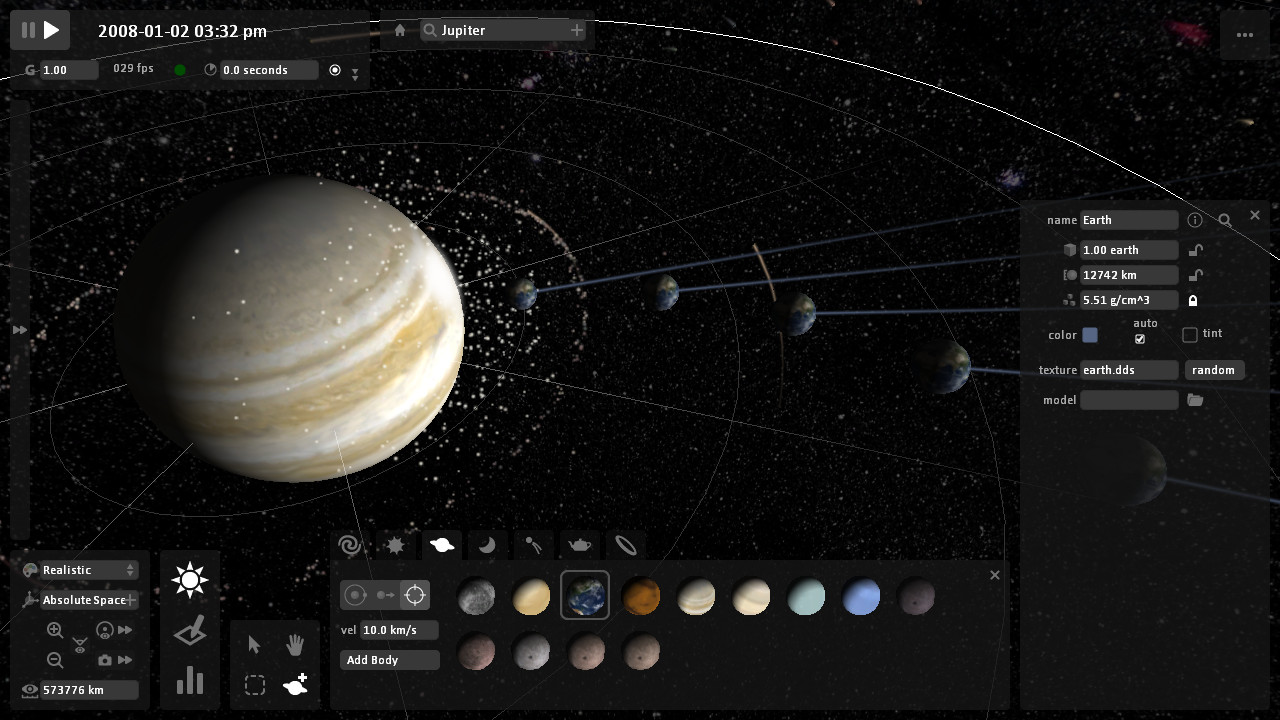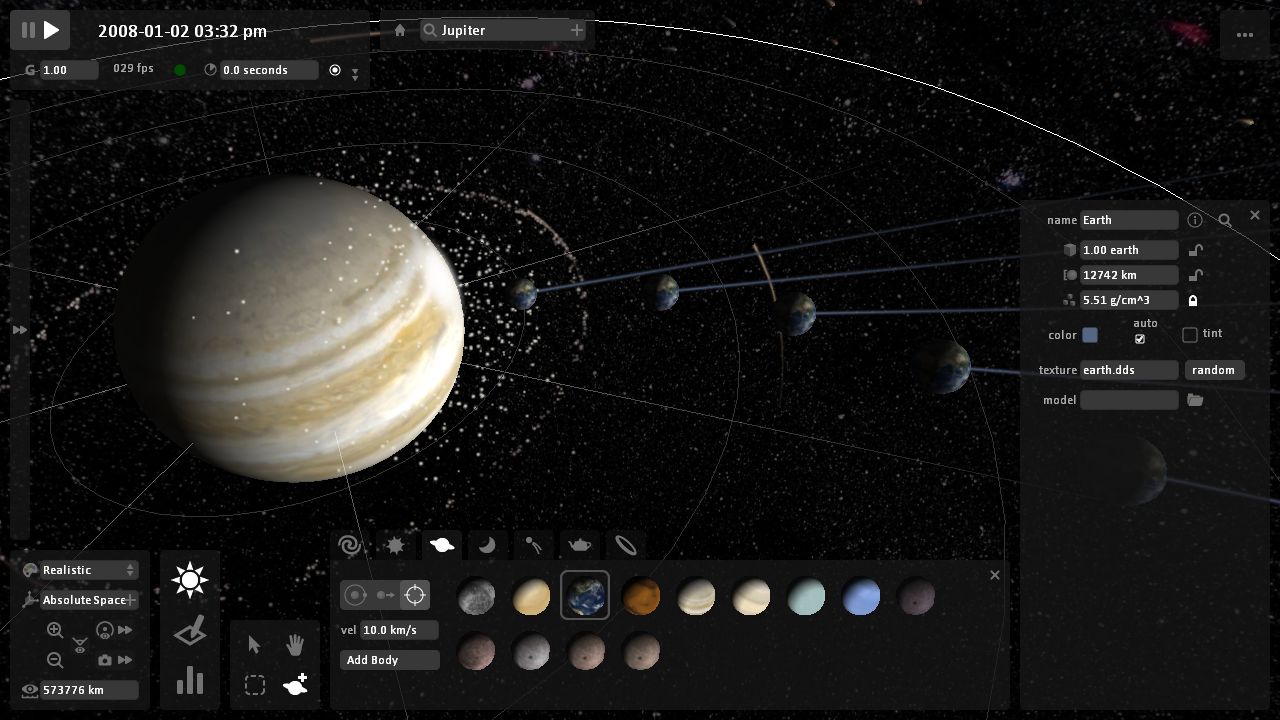
This feature and interface are a work in progress. Artificial coloring is used here to help differentiate materials. Liquid materials added to the surface of a planet with the Planetscaping tool will blend over time. If you change the composition, the radius will change with it.

Material colors are manually adjusted to help see the lakes. Titans properties include the amount of methane and the percentage in each phase (solid, liquid, and gas). Titan with realistic lakes of liquid methane. While we plan to work on everything we discuss here in 2023, complications may cause features to be delayed, and our priorities may change. Many of our projects, like bringing Universe Sandbox to phones and tablets, have been in development for months or years.

Improve our development tools to identify issues quickly and provide a more bug-free experience.Continue work on bringing Universe Sandbox to phones and tablets.Simulate light emission from hot planets.Overhaul our under-the-hood physics architecture to improve accuracy and performance.Add more materials for constructing & simulating planets & atmospheres.Fundamental improvements to our planetary collision systemĬheck out our 2022 Retrospective for more on what we did last year.Customizing the look and topography of planets and moons with a library of realistic color and height maps.

Exploring constellations for 10 different cultures.Spinning up planets so fast they break apart using the new Force Spin tool.These included many new features, but some of our favorites are In 2022, we put out 9 updates for Universe Sandbox. But before we dive in, let's recap some accomplishments from last year.ĭemonstrating highlights from 2022, including the Force Spin tool, Settle Water button, and Auto Simulation Speed. Our roadmap for 2023 includes simulating the lakes of liquid methane on Titan, hot planets emitting light, and realistically colliding spacecraft and bananas. We're working to give you more power to understand and control the complex phenomena of the universe. Blue means fewer computations, while red means more.

The colors show how many times the orbit of a nebula must be computed to maintain physical accuracy. Currently, trails are only shown for some nebulae due to performance limitations. The Milky Way galaxy with a trail for every nebula in the galaxy using our upcoming physics architecture improvements.


 0 kommentar(er)
0 kommentar(er)
